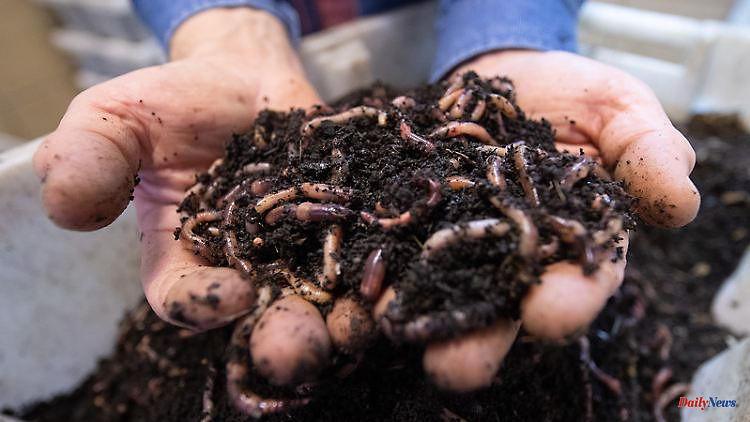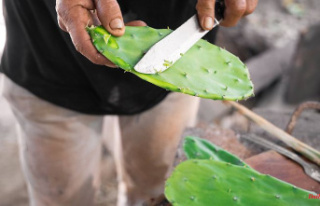It should offer the plants support, food and water: healthy soil is considered the basis for successful gardening. But for many years even the biologist Bärbel Oftring was unaware that it is also a habitat for billions of organisms." For me, the soil was a matter of course that I had not dealt with for a long time. It is a fascinating, complex ecosystem, that feeds many animals - just not as visible as a forest or meadow," says the author.
It is said that there is more life in a handful of soil than there are people on earth. What is it?
Bärbel Oftring: The soil is one of the most species-rich ecosystems on earth - if it is healthy. The earthworm is usually the first thing that comes to mind. He and other small animals make up only a tiny fraction of soil creatures. The overwhelming majority are fungi, bacteria and protozoa such as amoebas, flagellate animals and ciliates. These microorganisms are so tiny that they cannot be seen with the naked eye. They all have one task in common: to recycle organic waste such as leaves, plant remains, dead wood, carrion and excrement and to make the nutrients available to the plants.
Let's stay with the earthworm for now. To what extent is he making up ground?
Earthworms are world champions in soil loosening. Depending on the species, they live and burrow in layers of different depths. Their tunnels and passages supply oxygen to the soil. The worms also make a valuable contribution to climate protection. Their spaghetti-shaped droppings are not only a nutrient-rich fertilizer, but also bind CO2 in the soil through the clay-humus complexes.
Which animals can still be seen in the ground with the naked eye?
The more the ground is covered with leaves and other organic material, the more important garbage workers you can find: worms, isopods, centipedes, ground beetles and larger springtails for example, but also maggot-shaped larvae of flies, midges and crane flies. They all play an essential role in the decomposition and rearrangement of plant residues.
Animals also live in the ground, and they are often not so welcome. Nudibranchs, for example, which not only eat dead plants, but also completely bare fresh lettuce. What can you do against them?
Snails are also important decomposers of plant material. The fact that slugs are rampant in the garden is a man-made problem. The bitter substances have been bred out of many types of vegetables and salads, and there are hardly any natural enemies such as ground beetles, firefly larvae and tiger slugs. This creates an imbalance.
Let's move on to the less visible soil life. What are the tasks of fungi, protozoa and bacteria?
Fungi prepare the decomposition of dead plant matter. No mite wants to bite into an undecomposed branch. With their mycelium, fungi increase the surface area so that water can penetrate and the wood becomes damp. Small animals and protozoa can then work and multiply in this micro-atmosphere. Soil bacteria are extremely important for plants because they provide them with available nutrients. They are comparable to our intestinal bacteria. A healthy soil flora is self-sustaining and displaces unfavorable bacteria that weaken plants and, in the worst case, cause diseases. Many plants are not doing well because the soil is not doing well.
What harms soil life?
On the one hand, pesticides and mineral fertilizers. Most soil organisms are sensitive to the salts in which nitrogen, phosphorus and potassium are present in inorganic fertilizers. They also offer no food to the soil animals. On the other hand wrong tillage. Large machines compact the soil so that no more oxygen can penetrate into the depths. Machined floors destroy the natural fabric. It is usually sufficient to loosen the soil. Digging is only necessary in exceptional cases with very few, very heavy soils for frost proofing.
How can ground be made good again?
Avoid any poison, fertilize organically and mulch. Not only do you feed the soil life, you also protect it. An open floor is worn away by wind and water, dries out quickly and can crack. Many problems can also be solved with green manure. Depending on the mixture, the plants remove excess nutrients from the soil or loosen it with their roots. You can also sprinkle sand on heavy soils and powdered clay on light soils to regulate the water balance. Soil regeneration takes patience, but it doesn't last forever. Once the toxins are out of the ground and the soil is loose, soil life can multiply again.
(This article was first published on Monday, February 06, 2023.)












